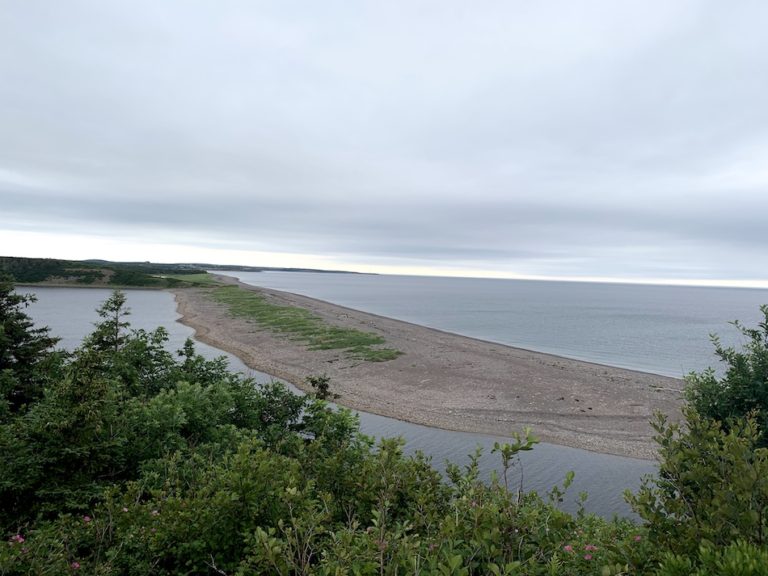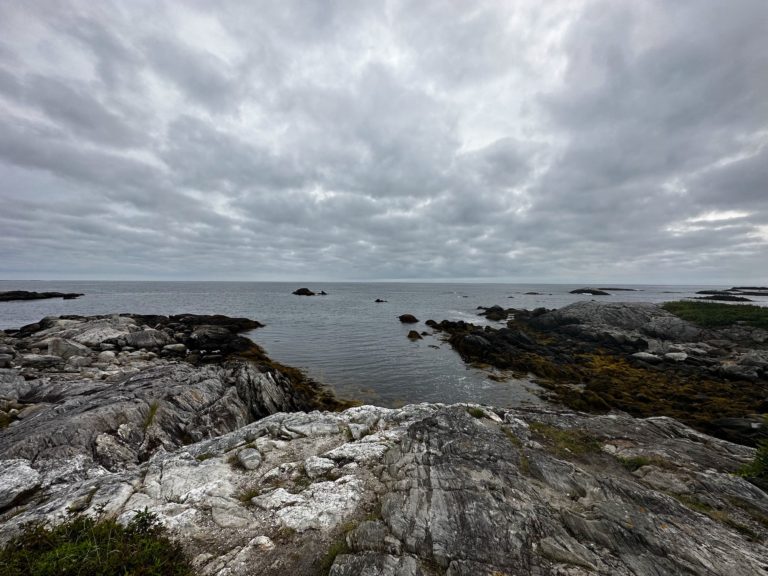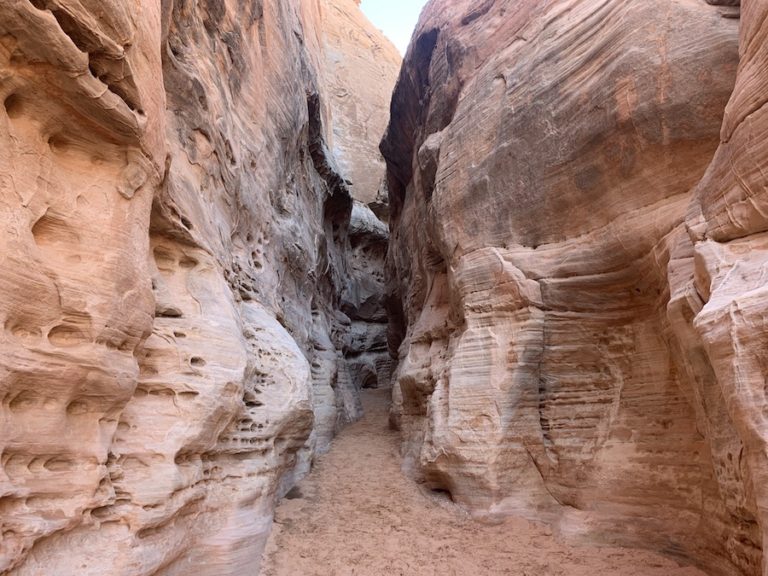Johnson River Falls Hike In Nova Scotia

The Johnson River Falls Trail is a short out-and-back hike near Fall River, Nova Scotia. As the trail’s title would suggest, it leads visitors to nice waterfalls on the Johnson River. The main waterfall is approximately 15 feet high, and there is a secondary fall nearby measuring about 5 feet high.
The hike to the falls isn’t overly challenging and is suitable for most hiking levels. Though it may not be the most strenuous hike, the effort is well worth it to catch a glimpse of the waterfalls.
Hikers can park at the end of Perrin Drive and walk along the logging trail to the unmarked trailhead. Getting to this waterfall makes for a perfect day trip from Halifax and the surrounding areas.
Difficulty: Easy
Length: 4.5 km (out and back)
Suggested Duration: 1 to 1.5 hours
Signage: none
Facilities: Small parking area
Disclaimer: This article includes affiliate links. If you click one of them, we may receive a small percentage of the sale at no extra cost to you. Thank you for your support!
Key Features Of Johnson River Falls Trail
- Groomed hike through the forest that leads to waterfalls on the Johnson River
Facilities And Services
- Small parking area
Before You Start Hiking Johnson River Falls Trail
The Johnson River Falls Trail begins at the end of Perrin Drive, where you will see a gate (picture below for reference). When the gate is open, it is possible to drive down a bit closer to the trailhead itself. However, there are no signs indicating when the gate will be closed. To avoid the chance of it closing while you are out exploring, it may be best to park before the gate.
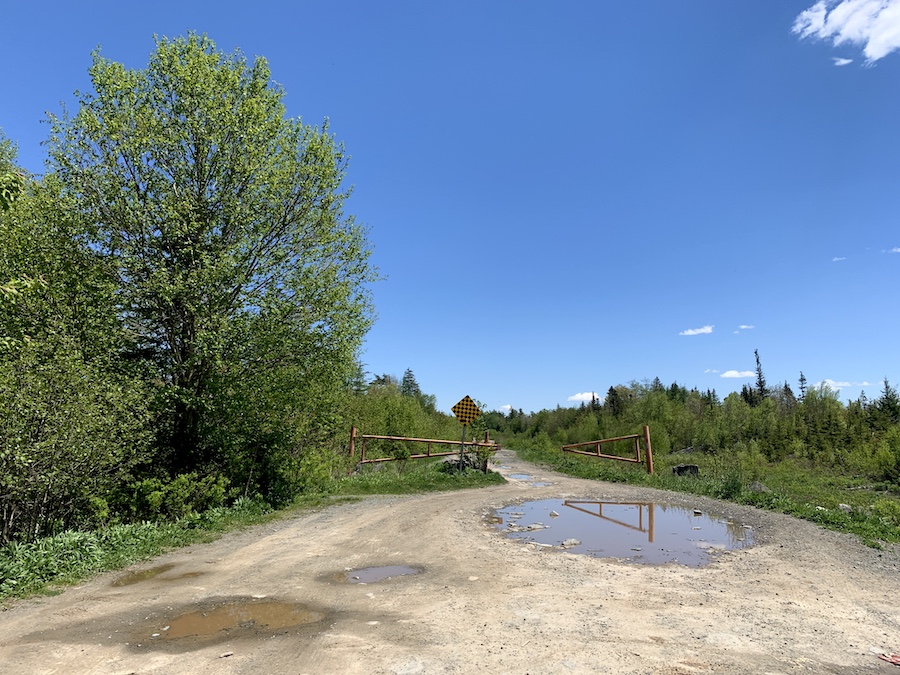
The trail begins at the gate, which will lead you to a large opening (this is the optional second parking area when the gate is open). The trailhead for Johnson River Falls will be on the right-hand side. There are no trail markers or signs to indicate where the falls are located. For this reason, we highly recommend downloading a map before hiking, especially if this is your first time here.
From here, you will follow along a relatively wide ATV trail. The trail will begin to narrow, and you will soon find yourself surrounded by nature and beautiful flora.

The trail is considerably muddy in some areas. Particularly wet areas will have off-trails to avoid large puddles. Water-resistant footwear or hiking boots are encouraged. In addition, be sure to pack sunscreen. The trail has little to no sun shelter until you reach the falls.
Dogs are welcomed on the trail, though they should remain on a leash at all times. Upon leaving the trail, be sure to check both yourself and your dog(s) for ticks. Consider picking up a tick removal tool to have with you while hiking. To learn more about tick prevention, check out our article How To Avoid Ticks When Hiking.
It is important to note that there is quite a bit of garbage left along the trail. Whenever you are outdoors, it is essential to leave no trace behind.
Our Experience Hiking Johnson River Falls Trail
Our experience hiking the Johnson River Falls Trail came on a warm June day. The sun was shining bright after a week of rain, so we were excited to get our exploring. The trail is only a short drive from the city, so we made the hike an afternoon activity.
Upon arrival, we parked outside the open gate at the end of Perrin Drive, which marks the end of the road and the beginning of a resource/logging road. As we were lacing up our hiking boots, a Jeep came driving through the resource road, setting up our expectation of a wide, heavily trafficked dirt road.
But this terrain would only be for the first (and last) 500 metres of the hike. As we made our way about half a kilometre, we turned off the road and onto one of the interconnected trails heading into the wilderness. Note, again, that the trails are unmarked. We would rely on the AllTrails App for the area map to stay on track throughout the hike.
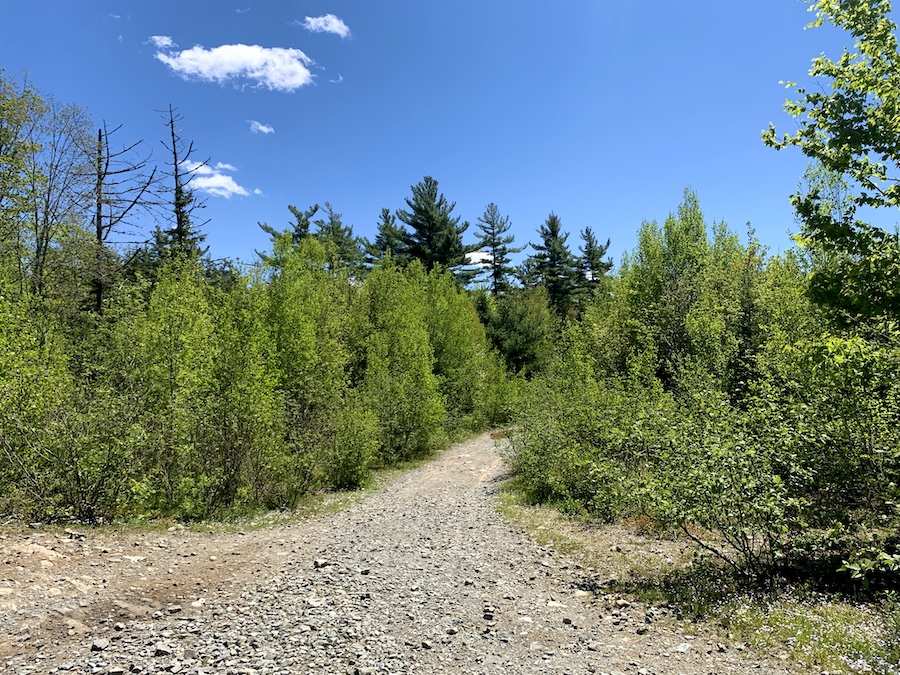
Moving on, we passed a few brooks, mud puddles and bushy terrains. This is all to be expected in this part of the province. The brooks were easy to cross thanks to bridges, the mud puddles were easily avoidable via alternate or widened trails, and the unavoidable bush wasn’t overly thick. As the tick population worsens in Nova Scotia, we have become more proactive, brushing ourselves off after each extended encounter with the bush.
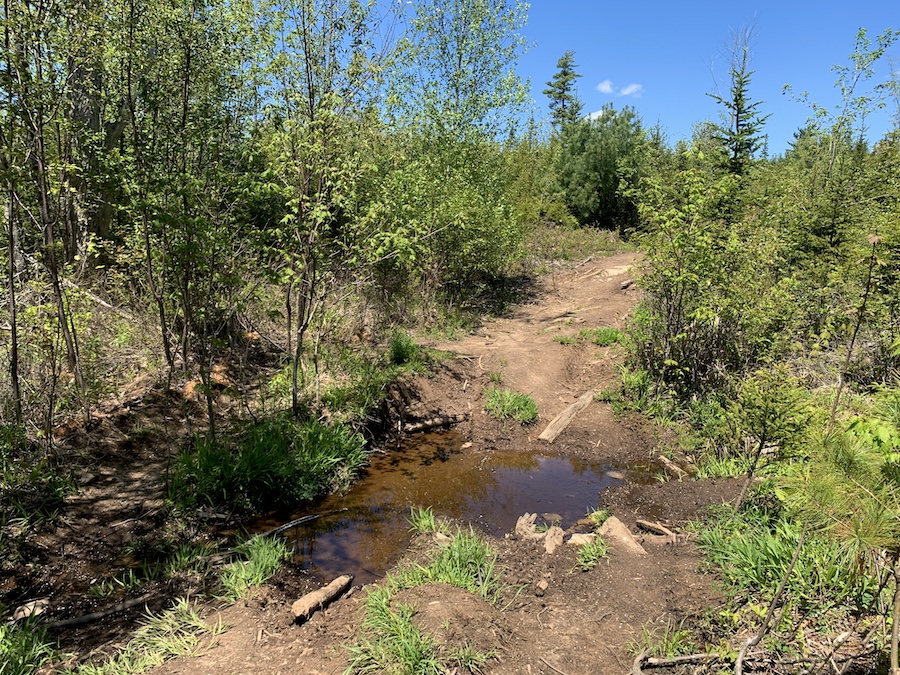
The terrain, as a whole, was easily trekked, and the elevation gain was low. Though the sun was shining bright, the lack of sun coverage didn’t play a major role during our short hike. That being said, on hotter days or those days with higher UV indexes, we certainly recommend bringing a hat, sunblock and extra water.
Before long, we made it to the falls, where we relaxed in the shade and cooled down beside the water. The river is fairly shallow, though it’s certainly possible to take a dip. For us, splashing water on our faces and necks was good enough to cool down before making the trek back.

Though the interconnectedness of the trails and lack of signage make it a bit of a challenge to get to the falls, there aren’t so many extraneous paths. The return path was easily discernable from our preceding experience of the trail. Note that some hikers do this hike with a loop, taking advantage of such interconnectivity.
We made it back to our vehicle in under an hour and a half (with well under an hour of moving time) with another great Nova Scotian waterfall hike checked off our list!
Checklists And Recommended Gear
The following is our recommended gear list for Johnson River Falls.
- Water bottle
- Hiking Shoes – Women’s // Men’s
- Camera/Phone to take photos
- Sunscreen
- Hat
- Insect repellent
- Cascade hiking poles
- Atlantick tick removal tool kit
Related Hikes
WATERFALLS IN NOVA SCOTIA
- Baxters Harbour Falls & Black Hole Falls (Baxters Harbour, Nova Scotia)
- Liscomb River Trail (Liscomb Mills, Nova Scotia)
- Victoria Park (Truro, Nova Scotia)
- Phantom Falls (Fantum Falls) (Nova Scotia, Canada)
- Dawson Brook Falls (Ellershouse, Nova Scotia)
- Uisge Ban Falls (Cape Breton, Nova Scotia)
- Fairy Hole (Cape Dauphin, Nova Scotia)

